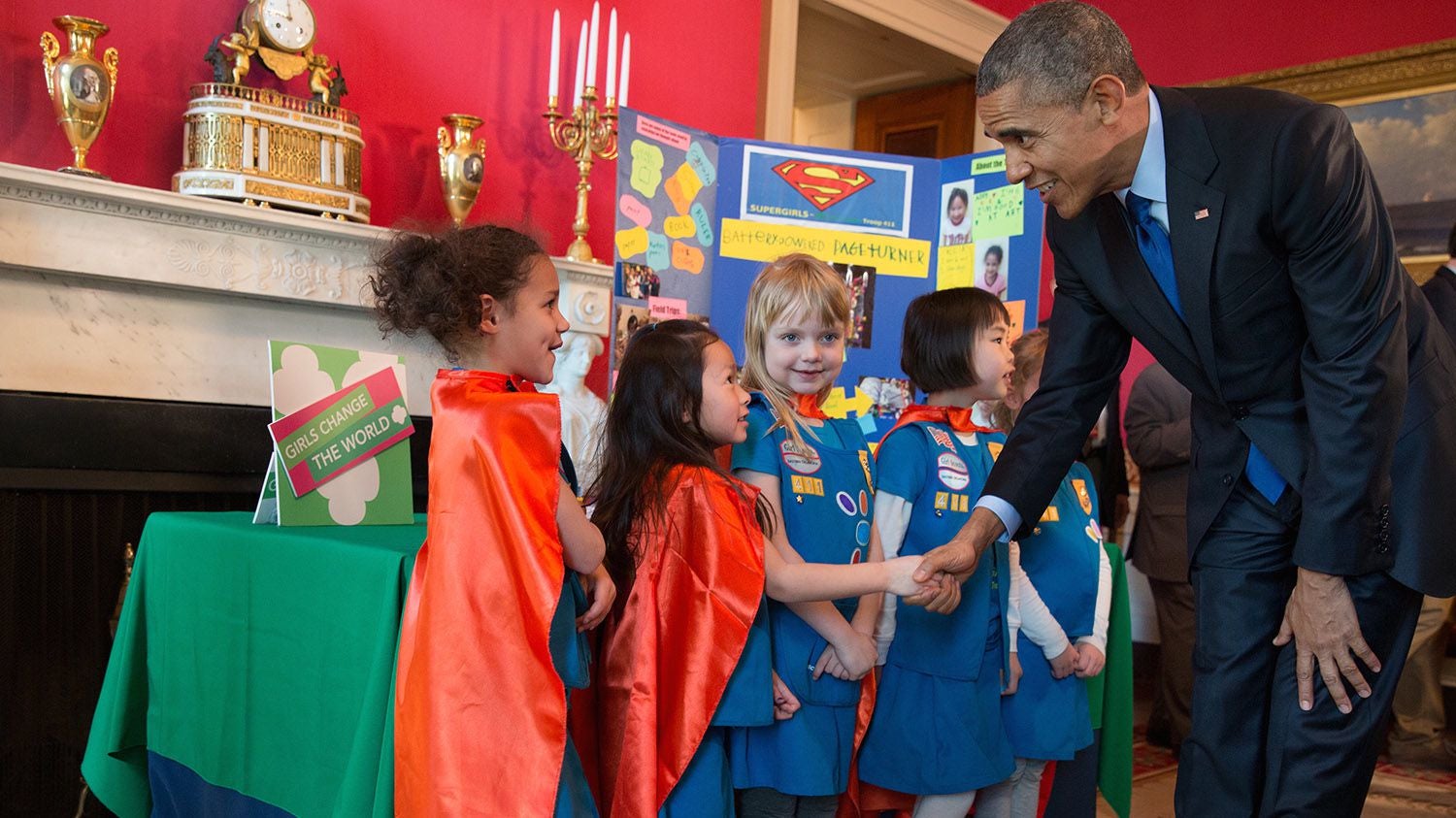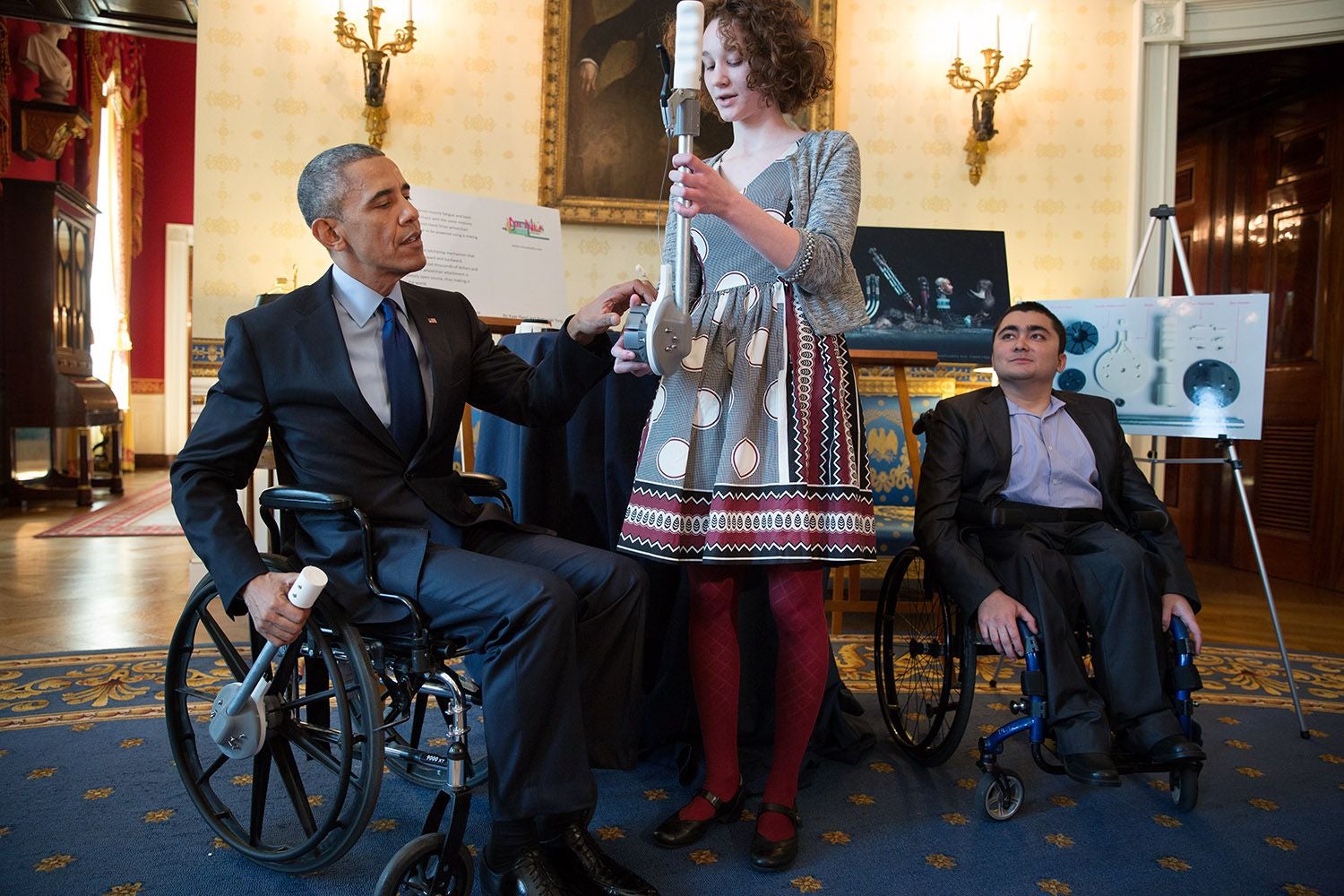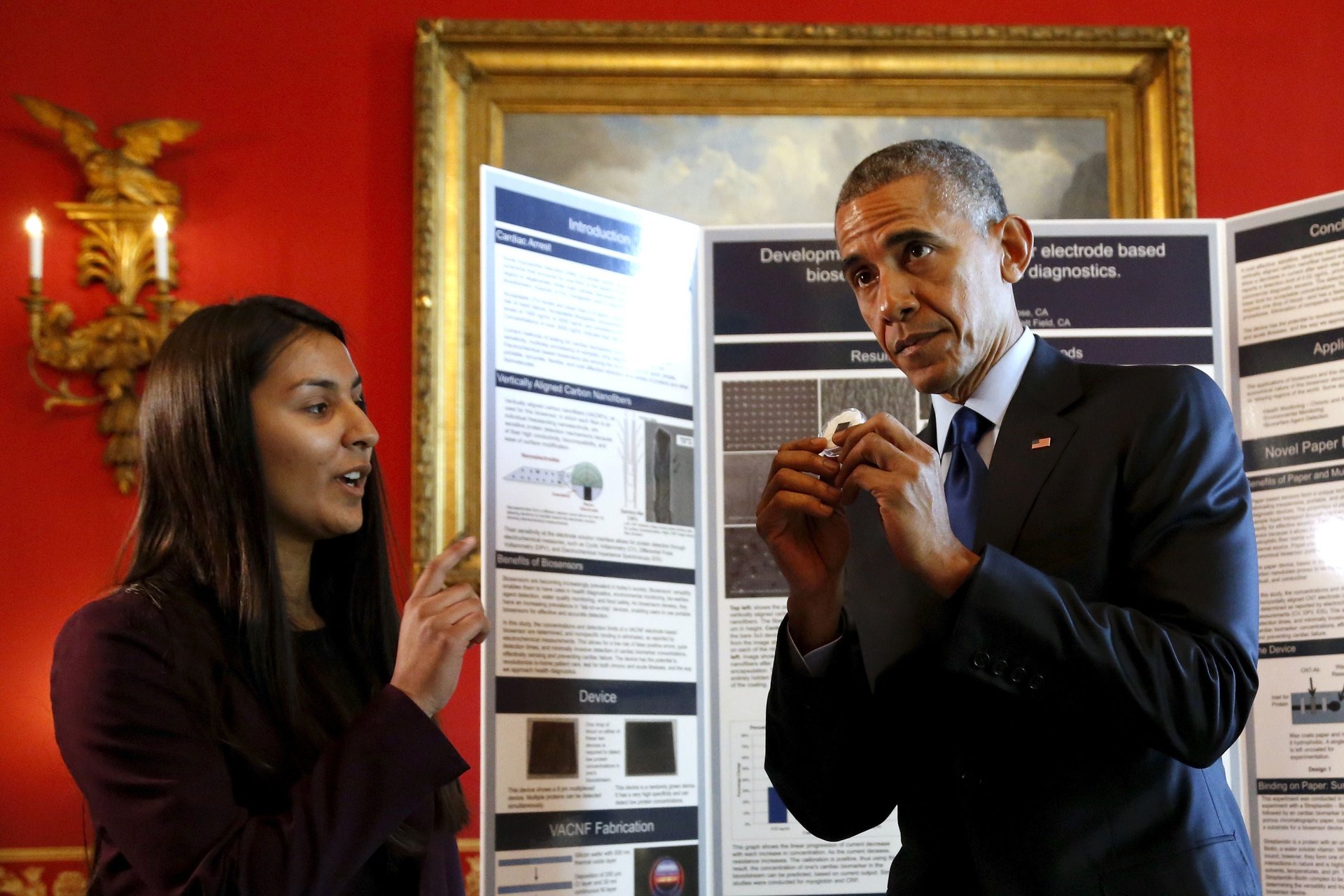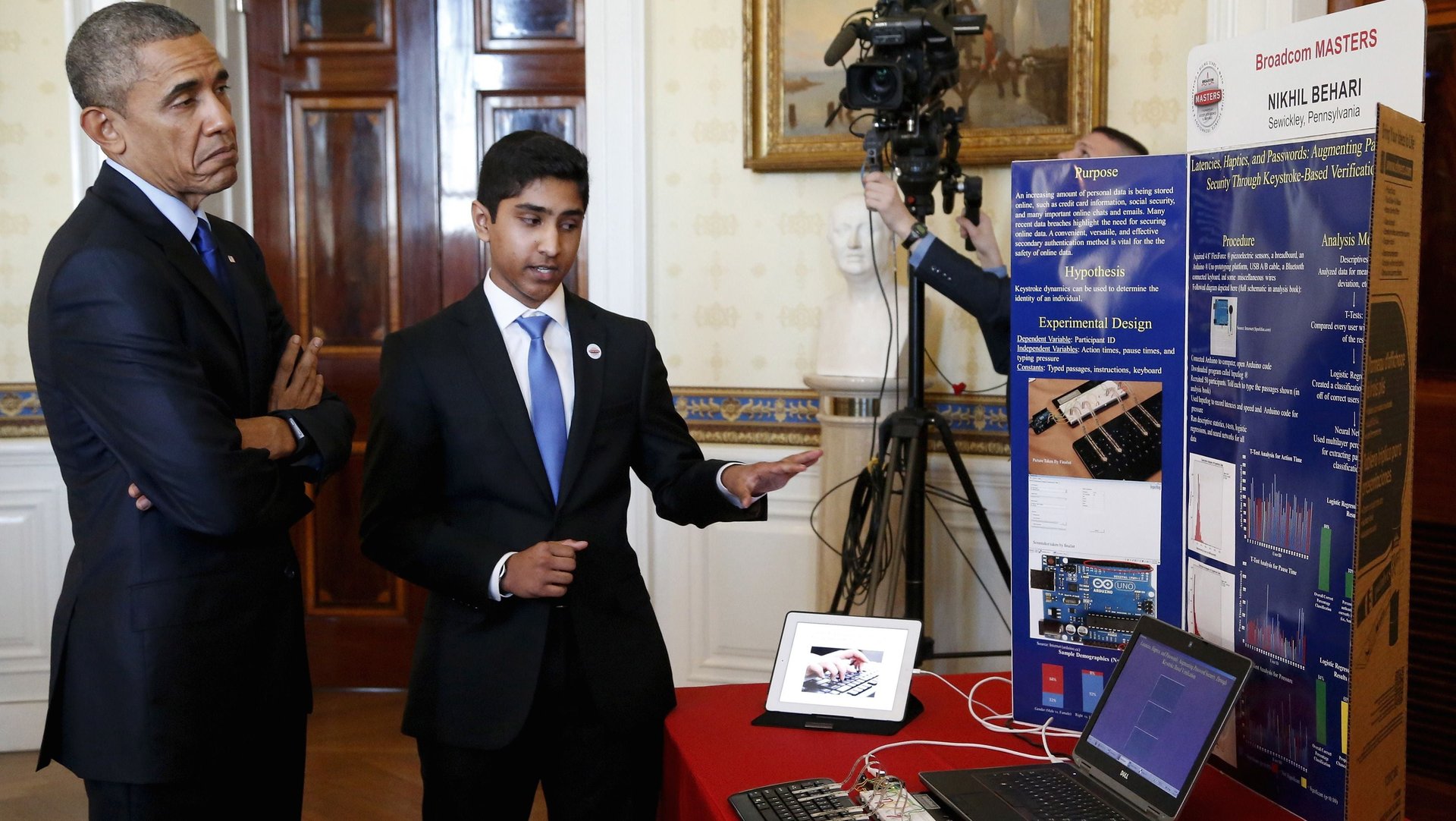The coolest inventions in this year’s White House science fair
Hordes of adorable brainiacs flooded the White House for its fifth annual science fair Monday (Mar. 24). President Barack Obama toured three dozen exhibits by students from around the country, but a group of 6-year-old girl scouts stole the show. The ‘“Supergirls” Junior FIRST Lego League Team flaunted a battery-powered robot made of Legos that can turn pages for people who are disabled.


Hordes of adorable brainiacs flooded the White House for its fifth annual science fair Monday (Mar. 24). President Barack Obama toured three dozen exhibits by students from around the country, but a group of 6-year-old girl scouts stole the show. The ‘“Supergirls” Junior FIRST Lego League Team flaunted a battery-powered robot made of Legos that can turn pages for people who are disabled.
Among the other projects, which ranged from software that searches for potential new drugs to fight vicious disease to a bracelet that wirelessly charges cell phones:
The multifunctional wheelchair accessory
Two Massachusetts 16-year-olds used a 3D printer to create wheelchair add-ons, including a lever to move backwards or forward, and a multipurpose attachable arm that acts as a ”food tray, camera tripod, rain canopy, laptop holder, and cup holder.”

The cardiac arrest predictor test
California high school senior Ruchi Pandya worked with a mentor at NASA to develop a biosensor that can tell if someone is likely to have a cardiac arrest in the next three days, from just one drop of blood.

The sensor looks for certain antigens in the blood, which will be elevated up to 72 hours in advance if someone is going to go into cardiac arrest, Pandya tells Quartz. Right now she’s working on making the device portable and paper-based, so people can buy it at a drug store, use it on the go, and toss it when they’re done, she says.
Next level password protection
Fourteen-year-old Nikhil Behari figured out how to recognize a person’s typing pattern, which could add another level of security to a device or application. According to the White House release, “he connected sensors to a microprocessor he had programmed to detect keystroke pressure, and used a separate program to measure action and pause time as users type.”

Aside from all the human cuties, there was also an appearance by Derby, a dog with 3D printed legs who we’ve written about before.